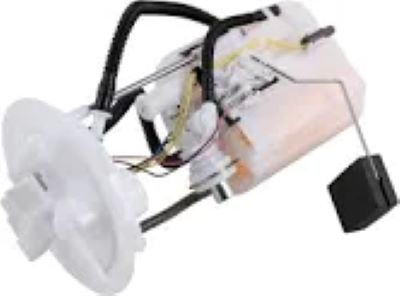From our experience, both types can be reliable but they differ in were the fuel pump is located. as well as the design of how they deliver fuel. In-Tank Fuel Pumps In-tank fuel pumps are installed inside the fuel tank and are among the most common types in modern vehicles. They have numerous benefits, including lowered vapor lock danger considering that the fuel encasing the pump helps cool it. This cooling effect will further make the pump last, and a long-lasting water pump of this kind should be able to go 100-150k miles on a typical car. In addition, because in-tank pumps are fully submerged and encased within the fuel and tank, they run quieter than exterior mounted motors during regular operation.
External fuel pumps, meanwhile, are mounted outside the fuel tank; typically along the lines. Primarily applications are in performance applications, or older vehicles where the fuel tank design doesn't facilitate an in-tank pump. The primary advantage of an external pump is ease. In the event the pump does fail, it can be replaced without requiring a fuel tank drop which can lead to saving time and labor costs. The only disadvantage to external pumps is that they tend to run hot because there is no fuel surrounding it and the life of this pump can often be shorter - typically lasting 60,000-100,00 miles.
External pumps are louder because they don't have the tank and fuel around them to absorb/insulate their noise. Where this noise difference really becomes heightened is on high performance and race cars using free-flowing external pumps that are required to deliver in excess of 300 liters per hour (LPH) vs. the 130-255 LPH flow rate of most OE sump pumps.

External pumps are more common in racing or modified vehicles as they provide a level of control over the fuel delivery system that an in-tank pump cannot. They will be able to facilitate high-pressure and high-flow applications characteristic of forced induction engines such as turbocharged or supercharged engines. For instance, powerful external pumps can hold fuel pressure north of 100 psi--something required for engines exceeding 500 horsepower.
The downside of external pumps is they can be damage easily due to the environmental factors. Due to the fact that they are not fully enclosed in tank, they are very vulnerable to debris, moisture or dirt and this may have an impact on them. Essentially, installation that consists of being placed in a protective sleeve or by using covers can be enough to protect from these risks.
Modern vehicles tend to use in-tank pumps for three main reasons: they are more reliable, much cooler because they are submerged into the tank and fielded within the fuel constantly, or they have an improved sound signature with the whole assembly mounted at a distance from you. In contrast some car tuners prefer external pumps since these types of vehicles require what's known as retuning – which could include adapting engine parts, such as carburetors for supercharged or running E85 – while older vehicles weren't originally intended for in-tank systems. In 2018, a performance vehicle study disclosed that more than 80% of cars with over 400 horses had been converted to external pumps since the fuel demands in liquid were stifling.
When upgrading or replacing a Fuel Pump, understanding the differences between external and in-tank systems can help save you both time and money that might be wasted choosing the wrong one for your particular goal of reliability and performance.